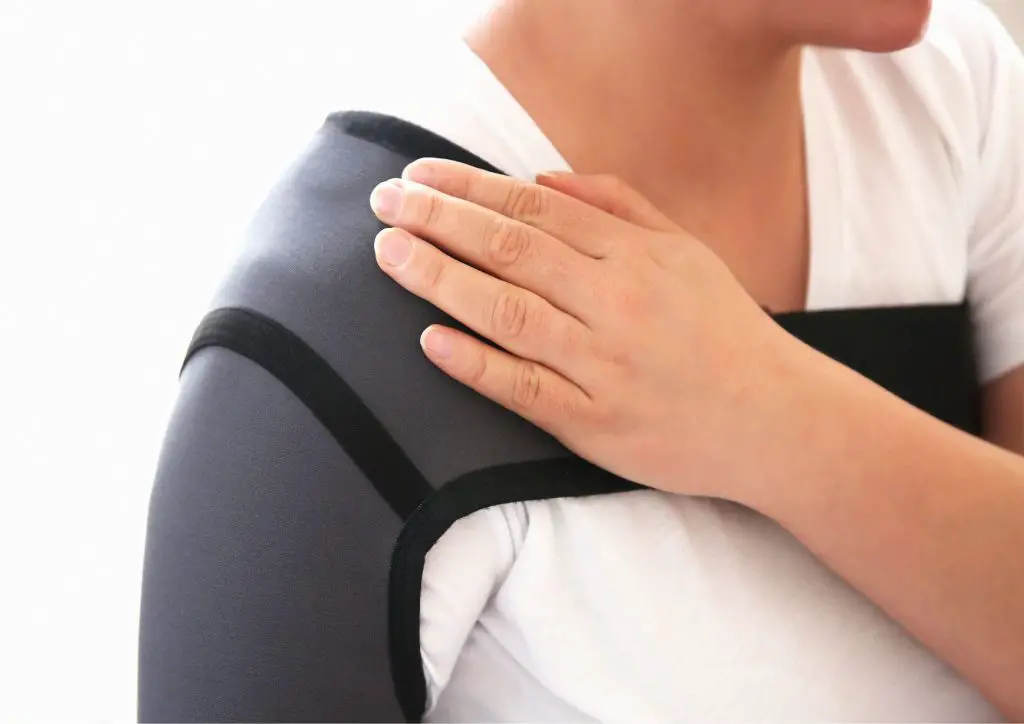Do you know that an essential addition to your injury recovery toolkit could be a shoulder brace?
Shoulder stability braces, medically engineered supports designed to immobilize, support, and protect the shoulder joint, have been hailed as a game-changer in physiotherapy and injury recovery.
Besides shielding the injured area, shoulder support plays a key role in speeding up the healing process, alleviating discomfort and pain, and preventing further damage.
Contents
Scope and Causes of Shoulder Injuries
Shoulder injuries are varied, ranging from common strains and sprains to more complex conditions such as rotator cuff tears, dislocation, and frozen shoulder.
These conditions can transpire from a multitude of causes, with overuse, physical trauma, and age-related degeneration being the prime contributors. Critical to recovery from any injury is an accurate diagnosis, enabling targeted treatment and rehabilitation strategies.
Repetitive movements, like those in certain sports or jobs, can lead to overuse injuries. Traumatic injury can result from falls, accidents, or abrupt force applied to the shoulder.
Degenerative conditions more often affect older individuals, as tissues in the shoulder gradually lose their resilience. Identifying the specific cause and type of injury is paramount on the road to recovery, ensuring that treatment efforts combat the root of the problem while catering to individual rehabilitation needs.

What is a Shoulder Brace?
A shoulder immobilizer is a supportive apparatus designed to safeguard the shoulder, helping to address injuries by maintaining optimal alignment and restricting harmful movements.
These braces aid in recovery, offer support during strenuous activities and assist with chronic pain management. Every shoulder predicament is unique, just like the individuals it affects. Consequently, there is no one-size-fits-all solution. When choosing it, several key factors should be considered:
- severity and nature of the injury;
- required level of mobility;
- user’s comfort.
6 Main Benefits of a Shoulder Brace for Injury Recovery
For maximum benefit, the chosen brace should ensure a snug yet comfortable fit, without limiting necessary movement, and be sufficiently adjustable to accommodate swelling fluctuations. An informed choice will facilitate your recovery and help you regain your active lifestyle with less discomfort.
Relief in Pain Management With Shoulder Support
Managing discomfort is an integral part of the recovery journey, and braces offer a valuable tool. These supportive devices work by restricting unnecessary movements, aligning the shoulder properly, and compressing the joint.
This pressure aids in reducing inflammation and swelling, two main contributors to pain. Additionally, by holding the shoulder in a position that promotes healing, braces help to alleviate the strain on injured tissues, resulting in less discomfort.
Lowering pain levels is crucial as it increases the individual’s ability to perform physiotherapy exercises and engage in daily activities much more comfortably. This proactive engagement enhances overall recovery potential, ensuring a smoother and faster rehabilitation.

Fast-tracking Recovery
These devices actively participate in the healing process. By providing consistent support, they maintain the joint in its most effective healing position. This constant optimal alignment promotes tissue repair and reduces the risk of further injury.
Not only do shoulder stability braces restrict harmful movements, but they also ease the load on the damaged area, allowing the body to focus its resources on healing. The indirect benefit of this improved recovery process is significantly reduced downtime associated with shoulder injuries.
Quicker healing means returning to your favourite activities sooner. It also minimizes the impact of the injury on your lifestyle and reduces the likelihood of long-term complications or chronic conditions.
Protective Aspect in Preventing Further Damage
By restraining excessive or harmful movements, the brace safeguards the injured shoulder from undue strain that could lead to more damage. Typically, after a shoulder injury, the joint becomes vulnerable and susceptible to re-injury.
A shoulder support brace, by providing constant support and stability, protects the joint during the healing process. Furthermore, while wearing a brace, the user is consciously reminded to be cautious of their movements, as the physical presence of the brace creates awareness, helping the individual to prevent sudden or jerky motions that could lead to re-injury.
Crucial Support in Physical Therapy
They provide much-needed support, allowing patients to safely carry out their targeted exercises. By controlling the shoulder’s range of motion, braces help to focus exercises on their intended regions without risking additional damage.
They enhance the effects of physical therapy by ensuring safety and preventing unfortunate setbacks that could result from uncontrolled or hazardous movements during exercise. A shoulder immobilizer also enables more effective pain control during physiotherapy sessions, making movement and strength-building exercises more manageable.
In essence, the use of a shoulder strap for pain allows for a more effective and efficient course of physical therapy, paving the way for a more streamlined recovery.

Maintaining Correct Alignment
By supporting the shoulder and maintaining it in an optimal position, braces inevitably encourage a straighter, more natural alignment of the upper body. A shoulder injury often leads to a shift or distortion in body alignment due to discomfort and the body’s instinct to protect the injured area.
This compensatory alteration in posture can lead to further musculoskeletal issues over time. However, with the regular use of a brace, the body is gently coaxed – and held – in the right alignment, mitigating the risk of posture-related complications.
Promoting Circulation
Shoulder braces contribute significantly to improved blood flow thereby aiding in quicker recovery. By adding compression to the injured area, the brace supports an increase in circulation.
This enhanced blood flow brings essential nutrients and oxygen to the injury site, which aids in the repair of damaged tissues and helps to remove waste, such as lactic acid, which can lead to pain and inflammation. By promoting this necessary influx of healing factors, a shoulder sling can accelerate the healing process, reducing the overall recovery time.
How to Use a Shoulder Brace Effectively

To reap all the benefits that a shoulder stabilizer can offer, it’s crucial to understand proper usage.
- Fitting the brace correctly is the first step. Always make sure that the brace fits snugly, providing adequate compression without impeding circulation or feeling uncomfortably tight;
- Regular use, as directed by a healthcare professional, is another key factor in amplifying its benefits. Consistent wear ensures a steady environment conducive to healing, but remember, a brace is part of the solution, not a cure-all;
- While the brace can significantly support recovery, it’s essential to continue with prescribed physiotherapy and exercises. Understanding its limitations helps integrate the brace effectively into a multifaceted recovery plan, ensuring that you’re better equipped to navigate the recovery path.
Conclusion
The tangible benefits of a brace for injury recovery cannot be overstated. From supporting the joint, accelerating healing, and managing discomfort, to preventing additional damage, it is a key tool in successful rehabilitation.
Braces also crucially aid physical therapy by controlling shoulder motion, reducing risks during exercise, and ensuring effective pain control. Thus, employing this brace, along with a customized physical therapy regimen, can catalyze recovery and assist individuals in navigating the rehabilitation journey effectively.





